
In UK, the currency is the pound sterling, usually called pound. 1/100 is a penny. You should exchange some amount of money in your home country in advance (you can't pay with a card everywhere), because quite predatory exchange rates and service fees can apply in money exchanges at airports. In slang, currency can also be "quid" and "p" (these names are SINGULAR, no matter how many tens of money you have). It's also not hard to find places to exchange money in London. Post offices and many other places. These places are called Bureau de Change. Of course, you can also exchange money in banks. Please note that an identity document may be required when exchanging money. There may be problems with exchanging 500 euros, take smaller bills with you. There are probably no problems with paper money, the value is beautifully printed on these. A little more difficult is to select the right coins, if necessary. Most of the coins (newer ones) have no numerical value on these at all, it is written in words and in very small print. The value sequence of the coins is the same as the euro coins. So 1, 2, 5, 10, 20, 50. Plus 1 and 2 pounds. There is actually a metal five-pounder, but not even many locals have seen it. The one and two pence are copper, the 2 pence is surprisingly large. 5 and 10 are silver. 20 and 50 are also silver, but... heptagonal. Of course, coins of the same colour and shape with a higher value are also larger. A pound coin is easily recognized by its unusual thickness. The £1 and £2 of the newer issue, like the corresponding euro coins, are made from two different metals. If you examine the reverse side of newer coins, you may be amazed by the strange shapes. To clarify for the curious - these are tiny pieces cut from the coat of arms. On the obverse of the coins, there is a relief of the queen and the inscription D • G REG • F • D. This means: Dei Gratia Regina Fidei Defensatrix (Lat. Queen of the grace of God, defender of the faith, for the king it would be Rex Fidei Defensor). The value of the coin is on the back, but as already said, it is relatively difficult to read. Coins show the Queen as she looked in the year they were minted, paper money shows her much younger.
Today 1 euro is pounds
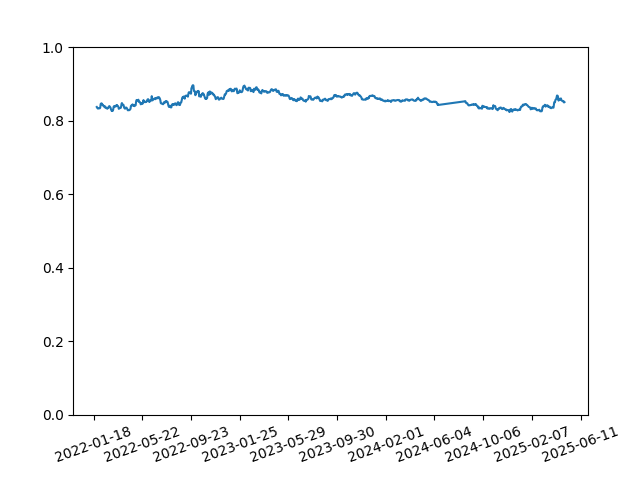
Public transport in London is represented by the Underground*, railways, buses and trams. It's true, you still have to go quite far from the city centre to see the tram. You can buy single tickets from machines at Underground and railway stations, but it is cheaper to buy an Oyster card**. There is also a card called Travelcard, but it seems to be slowly dying out... Londoners themselves mainly use a card called Oyster (recently, contactless bank card payment is also more and more common, but it may not work with every foreign card, besides, it is not wise to have your bank card at every station to take out, let it be nicely hidden). Oyster is a plastic card that you have to buy for £7 and then load money onto it (called top up). When you leave, you can sell the card back and get back all the unused money (up to £10). If you still decide not to do this, the money there and the card itself do not expire, you can continue to use it even years later when you end up in London. In the Underground and train stations, Oyster must be validated (by waving it in front of the appropriate reader) both when entering and exiting. In the bus, you only need to validate when entering (the reader is with the driver, often elsewhere). In the case of a tram, the reader is on the platform. A one-time ticket is given back by the machine upon entry, but not upon exit. So keep the ticket while driving, otherwise you won't be able to get out. You cannot pay in cash or by card (except contactless card) on the bus. The Underground is very convenient and easy to use. There is a lot of information, and it is quite easy to get to your destination comfortably with even minimal knowledge of English (there is also a video with a detailed explanation in the videos section). London is relatively flat and it is easy to walk from the nearest tube station to the attractions.
NB! Public transport stops/stations in London are marked with a sign called a 'roundel'. It consists of a circle on a mostly white background with a horizontal line in the centre bearing the name of the stop/station. The colour indicates which type of transport it is, see the figure. In some bus stops, the horizontal line is white, these are request stops, where the bus stops only on demand. Do not wave at the bus driver desperately, as a signal, it is enough to stand on the side of the pavement (Am: sidewalk) and raise your left hand with an open palm next to your leg at about 45 degrees. To exit the bus, you must press the corresponding button before the stop. It should always be done, because most of the time you don't know if the next stop is or isn't a request stop. There are special buses called Hop On Hop Off to explore the sights of the city. But they are quite costly. I would recommend regular buses to explore the city centre instead. From there, sitting on the upper floor, everything is also interesting to see, but less money is spent. Buses 4 and 88 would be particularly suitable. And to go to Camden market, for example, you could choose bus 29 instead of the Underground (Trafalgar Square -> Camden Town Station, from there the bus turns right, but walk a few hundred meters still in the same direction NNW). You can also see the interesting objects No. 28, 103 and 131 described here on the road. You can also see many well-known places by taking bus 453 towards the city centre. Exiting Lambeth North (Bakerloo Line) tube station, the stop is directly across the road.
 See the history of this sign
See the history of this sign
On the Underground, the doors open automatically at every stop, on the DLR and mainline trains, you have to press a button on or next to the door to open the door.
Reading the above, you may have wondered what DLR is. This is the Docklands Light Railway. You can use it, for example, to get to Greenwich***. It's a train without a driver. It is quite interesting to go and sit right at the front of the train. By the way, if you decide to visit the Greenwich Observatory, it is not worth going to the station of that name. Better get off at Island Gardens station and go under the Thames through the pedestrian tunnel. There is also a great view of the entire city centre from the observatory in Greenwich. Another such place from where you can get a panoramic view of the whole city centre is Primrose Hill. The latter is relatively high, so you could choose the "downhill path".  First, take the Underground to the Swiss Cottage station. Walking from there to Primrose Hill, you pass through the residential areas of the "bold and beautiful" (Kate Moss, the Gallagher brothers, Jude Law, Jonny Lee Miller, Sadie Frost, Rhys Ifans, etc.). Down the hill you reach the zoo (opened in 1829, the largest in England). Further on, you can enjoy Regent Park, and if not tired yet, south of the park is Madame Tussaud's museum of wax figures and Sherlock Holmes Museum. They are paid and quite high-priced.
First, take the Underground to the Swiss Cottage station. Walking from there to Primrose Hill, you pass through the residential areas of the "bold and beautiful" (Kate Moss, the Gallagher brothers, Jude Law, Jonny Lee Miller, Sadie Frost, Rhys Ifans, etc.). Down the hill you reach the zoo (opened in 1829, the largest in England). Further on, you can enjoy Regent Park, and if not tired yet, south of the park is Madame Tussaud's museum of wax figures and Sherlock Holmes Museum. They are paid and quite high-priced.
* Tube in local slang, officially Underground. Not Metro or Subway, don't say that! Metro is a local newspaper, Subway is a restaurant. In fact, the name Subway is also found in some places, it means a pedestrian tunnel.
** However, there are some cases where it is cheaper to buy a single ticket - for example, a train ticket from Gatwick Airport.
*** By the way, Greenwich is pronounced something like "grenich". Many London place names have unexpected pronunciations, for example Islington is pronounced "iglintn" by some people, Leicester is "lester". Look in the menu: Various -> Place names.
**** The sequence of people in England is queue, not line, like in the USA.
By the way, Underground train doors have buttons to open the doors. Don't use these. You make a fool of yourself in front of other passengers. As already mentioned, the doors in the Underground open by themselves at each stop.
The Underground is a nice thing. But the line map does not reflect the actual distances between the stations. Always look at the normal map as well.
Example 1. You are in Leicester (read: lester) Square and you want to go to Covent Garden Market. You ride the Underground. The train ride lasts 40 seconds from the time the doors close until the doors open at the next station. I measured it myself. But with walking in the underground tunnels, checking the tickets, waiting for the train and taking the escalator/lift (not called elevator here), it will take you about 8 minutes to get there. You better walk. After all, the destination was only 250 meters away.
Example 2. You need to get from Regent Park to Great Portland Street. You look at the Underground plan and find that there is no line with a direct connection. You have to go to Baker Street station and change there. This trip is already considerably longer than in the previous example. When you get out of the Underground after at least a quarter of an hour of adventure, know that the place where you started is 250 meters away behind a small curve in the road.
Example 3. The distance between Queensway and Bayswater stations is 200 meters, but it takes a long, long time to travel by Underground. Better to walk. Around the middle is the shop Kalinka, where you can buy, among other things, real black bread, which is not known to be sold anywhere else.
For example, if you want to go to the zoo, know that it is located at the northern edge of Regent Park. But it is not worth going to the Underground station of that name. You should walk about 1.7 km from there. Camden Town station is much closer. Or if you want to see a house called Mansion House, you have to ride to Bank station. Not the Mansion House station, which is a bit further away and is named after a pub instead. And if you confuse the similar names and drive to Manor House station, you are instead six and a half kilometres away.
These were, of course, extreme examples. But a little walk won't hurt. Follow the round plaques on the houses. For example, I found the former residences of Churchill and Orwell by chance. See also Google map, where I marked the most interesting places. From there you can see which ones are close to each other.
The Underground plan is conditional. You can see the actual location of the lines in the picture below.
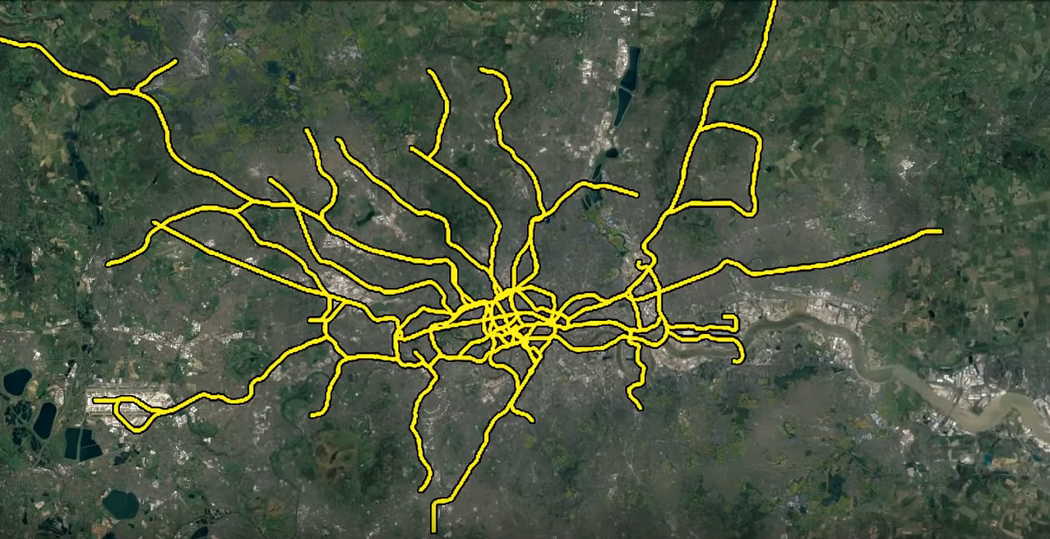
London also has a dense network of overground railways. Payment by Oyster card is also valid there. If you look at the diagram below, you may be surprised to see railways in a place where you know for sure there are none. For example, driving through the king's palace.  The point is that London's "mainline" trains often travel long stretches underground in tunnels.
The point is that London's "mainline" trains often travel long stretches underground in tunnels.
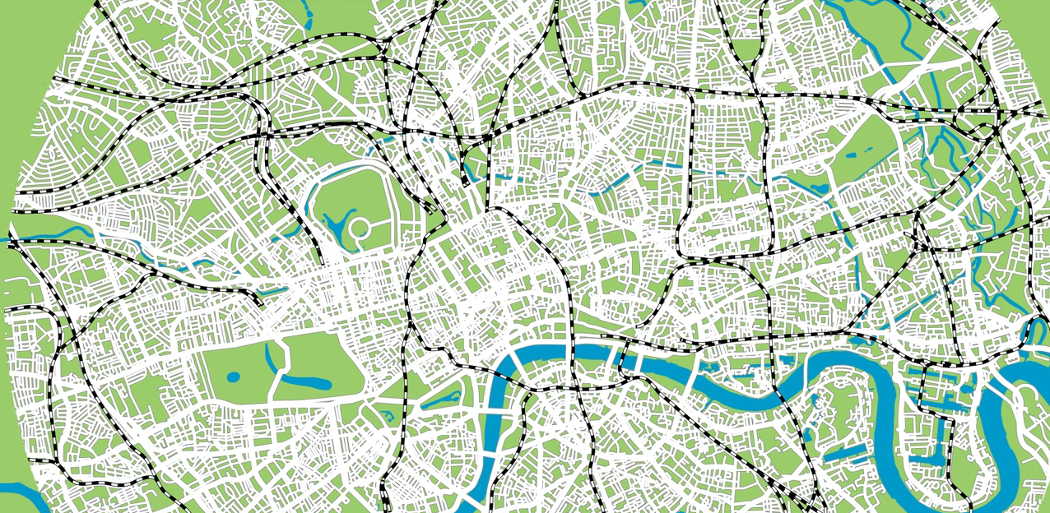
Bicycle rental is very well organized in London. There are hundreds of machines on the street where you can take a bicycle and return it to another machine after the ride. It's not terribly costly either. You are charged £2 per day, no matter how many times you use it. Thereafter, the first half hour of each use is free and £2 for each additional half hour. So it is cheaper to make short trips, but a lot.
There are three necessary conditions for using the service:
See the locations of the vending machines here
Photography is allowed in public places (streets, squares, etc.) in London. Owner's permission is required for photography in private properties (for example shops). Of course, keep a limit, if you still feel that, for example, some person does not want to be photographed in this situation, respect their will. If photography is really prohibited in a certain place (for example, for the sake of national defence), this information is also displayed in writing and clearly visible. In this, the UK is much freer than, for example, France, where you can take pictures of the Eiffel Tower, but not at night, because the lighting is an object of copyright protection (much of it is controlled by the police now, it's a matter of course). Architecture is a creation, but in London you can photograph every house if you want.
If you want to learn more about the matter, watch the video  , how the lawyer explains the matter.
, how the lawyer explains the matter.
Nowadays, almost everyone has a mobile phone in their pocket, and calling home from it is usually not very costly.
In any case, the phone in the hotel room should not be used. It is unnecessarily high-priced. There are many phone boxes everywhere on the streets, if for some reason a mobile phone is not suitable, use these. Beautiful reds. Most of the work with phone cards (can be bought at post offices and news-stands), but there are also some that work with coins. In recent times, some strange pillars appear on the streets, from which you can make phone calls, but also perform many other online actions.
The code for London is 020. When calling from home, dial 0044 or +44, then 20 and then an eight-digit number. Mobile phone numbers start with "07...", the "0" must be omitted here. To call abroad from London, dial 00 (from a mobile +) and then the international code of the place (Estonia 372, Vatican 379, Antarctica 672, etc.) and the local number.
The United Kingdom has officially switched to the metric system of units of measurement, but the old units of measurement are also stubbornly lost. Temperature is only measured in degrees of Celsius. And petrol stations also sell car fuel in litres. But if you go to a pub, you have to order a pint or a half pint of beer (Be careful, the pint is bigger and the beer is stronger than in the USA.  ). If you buy a small bottle of milk, it has a volume of 568 ml / 1 pint. Again, a UK pint is larger than a US pint, so is a gallon, which is known to be 8 pints. A quart is again a fourth of a gallon, so two pints. A confusing story. If you want to know the units in more detail, you can look here
). If you buy a small bottle of milk, it has a volume of 568 ml / 1 pint. Again, a UK pint is larger than a US pint, so is a gallon, which is known to be 8 pints. A quart is again a fourth of a gallon, so two pints. A confusing story. If you want to know the units in more detail, you can look here
Maybe you want to visit a pub? No, I'm not inviting you to get drunk. In an English pub, you can sit all evening with one beer and the staff will not show nervousness. The pub is part of authentic English culture.
In Great Britain, bars are called Pub (short for Public House). According to the law, alcohol can be consumed from the age of 18. As an exception, a person at least 16 years old may consume beer, wine and cider accompanied by an adult, if these are served with food in a catering establishment.*
There are a lot of people in London pubs, especially in the evenings, but mostly they remain cultured. It is rare to see a drunk person on the streets of London.
Most pubs in London are associated with a specific brewery and only sell their beer (you can see the name of the brewery on the sign outside). There are also independent pubs that sell a wider selection. In any case, you have to choose a variety of beer (there are many of these). It is somewhat complicated for us. Can you tell me how might taste: Pigswill, Dogs Bollocks, Hobgoblin, Old Thumper, Pommies Revenge, Brakspears, Courage Best, Friary Meux, Ind Coope Burton, Old Speckled Hen, Wadworths 6X or Boondoggle? When ordering beer, you must name the type, brand and volume (pint or half-pint). Fortunately, it's perfectly OK to ask the bartender for advice. He does suggest something. English beer is mostly served at room temperature.
Pubs (sometimes called taverns) usually have strange names. Often appears as the name Red Lion. However, the word "arms" is also often included in the pub's name, for example the Northumberland Arms. It is derived from the name "coat of arms" of the local supreme family coat of arms, this coat of arms is usually seen on the facade as well.
Brief Descriptions:
 )
)* Peculiar laws, but that's how it is..
Haven't visited these places myself, but local expert David Long recommends:
Streets in London are named very differently. Here would be a brief explanation of how. Only the most frequently used names.
As always with the rules, there are thousands of exceptions... Allegedly not officially allowed: End, Court, Cross, Side, View, Walk, Park, Meadow. However, there are many of these. I assume that there should not be new ones with that name.
Interestingly, which of the two words is emphasized also depends on the type of street. For "street" the emphasis is on the first word, for "road" on the second. So: Oxford Street, but Portobello Road.
Some more interesting street names from London
Upper Butts, Man in Moon Passage, Love Lane, Hanging Sword Alley, Back Lane, Birdcage Walk, Cockpit Steps, Swallow Street, Wardrobe Place , Friday Street, Mincing Lane, Milk Street, Bread Street, Mount Pleasant, Flask Walk, Pudding Lane, Old Jewry, Crutched Friars, Vine Street, Cock Lane, French Ordinary Court, Knightrider Street, Bleeding Heart Yard, Shoulder of Mutton Alley, St Mary Axe.
You can read the origin of these names at https://lookup.london/weird-london-street-names-2/.
DLR is Docklands Light Railway. There are fully automatic trains that drive themselves, without a driver. But in fact, there is still a staff on the train, one person responsible for closing the doors and making sure everything is fine. But he mostly walks around somewhere in the middle of the train.
For this person, there is a special control panel at each door that he can use by turning it on with the key. The key has three positions.
Perhaps you wonder what this key does and what buttons are these?
N - Neutral, no button works
E - The panel is on
I - An emergency brake, by turning the key to this position stops the train instantly
The buttons are as follows:
PA - Public Alarm, voice can be transmitted to all coaches by pressing it
COD - Close other doors
CTD - Close this door
ROD - Release other doors, doors can be opened again from outside at the touch of a button (to let in some delayed passenger)
When to turn the key to the neutral position, the train will go back to complete automatic control.

In fact, there is also a control panel at the forefront of the train, the entire train can be manually driven. But it is rarely needed. Rather, to move in the depot or in some emergency situations.
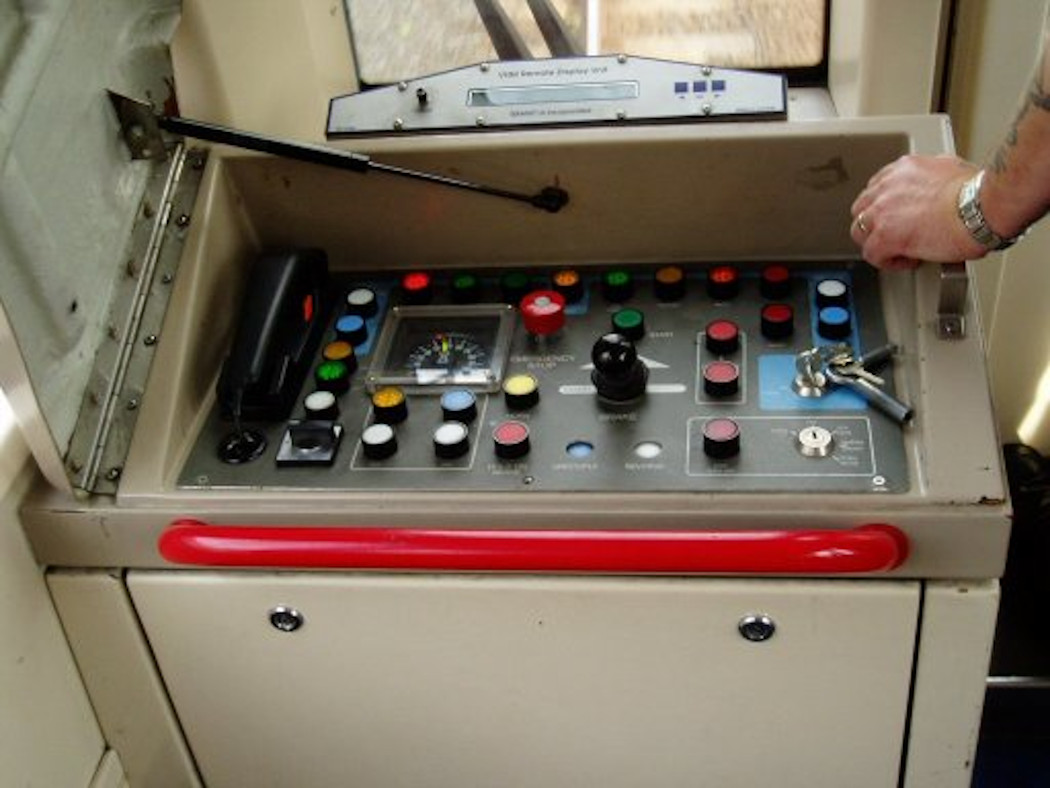
No matter how nice it is to be in London, you have to go back home someday. With some airlines, there is no problem, you can do your check-in at home also for the return trip and print the boarding pass at home. But some airlines do not allow it to be done so early, and then problems arise. Check-in can be done (very inconvenient) with a smartphone, but isn't there a printer attached to the phone? At the airport, however, they charge quite a bit of money for printing (not with some airlines, but who knows?). In some airports you can show the boarding pass code on the phone screen, but abroad, don't be sure... Whether you can or not, you will only find out at the airport. But all of us would like to go on a flight without being overly nervous.
To avoid problems, I suggest one good place. You can print, scan, make copies, laminate... Not costly.
4 Little Portland Street
London W1W 7JB
Phone: 0207 409 0083
Closest station: Oxford Circus (2 minutes walk, north from the station, third street on the right)
Open:
Mon..Fri : 8.00 to 22.00
Sat..Sun & Bank Holidays: 10.00 to 20.00
January
On January 1, starting at noon, there will be a three-hour parade on the route Parliament Square → Berkeley Square. It's called the London Parade or the New Year's Day Parade. You can get information about the parade: https://lnydp.com/.
February
Chinese New Year is celebrated in late January or early February. It takes place in Chinatown mainly on its main street, Gerrard Street (aka Lisle St). Additional information by phone: 020 7851-6686. You can probably find out the exact date from domestic newspapers.
March
St. Patrick's Day, the parade takes place on the weekend around March 17th. London has the third largest Irish community in the world after Dublin and New York. Since 2002, the parade has mostly been held near Trafalgar Square.
The King's Road Antiques Fair. Taking place over 3 days at Chelsea's Old Town Hall. More information: www.penman-fairs.co.uk.
April
Oxford and Cambridge Boat Race, a rowing competition between two universities on the River Thames between two bridges - Putney Bridge and Mortlake Bridge. Best viewed from the street called Hammersmith Mall. Held on the last Thursday of March or the first Saturday of April. Info www.theboatrace.org.
The London Marathon. First held in 1981, now one of the most popular sporting events in the city. ≈45,000 runners participate. Distance length 26.2 miles (ca 42 km). The run starts in Greenwich, passes the Tower and ends in front of Buckingham Palace.
May
The Football Association FA Cup Final, takes place at Wembley Stadium in mid-May. Very popular, tickets are quite hard to get. Info: www.thefa.com and www.wembleystadium.com.
The Chelsea Flower Show, held in the grounds of Chelsea Royal Hospital, attracts tens of thousands of flower enthusiasts. It takes place in the third week of May. You have to get tickets at least two months in advance. Info: www.rhs.org.uk.
June
The juried Royal Academy Summer Exhibition - see around 1,000 works of art by living artists from all over the country. Info: www.royalacademy.org.uk.
The most important horse race is Royal Ascot, it is held at Ascot Racecourse (near Windsor) in the presence of the royal family towards the end of June. Information and ordering tickets: www.ascot.co.uk.
In Kenwood (Hampstead Heath) there are open-air concerts Kenwood Lakeside Concerts (Saturday evenings). Information: 020 8233-7435.
Wimbledon Lawn Tennis Championships. Tickets are very hard to get. Info: www.wimbledon.com.
The City of London Festival features classical music concerts, poetry readings and theatre performances in historic buildings and churches (including St. Paul's Cathedral and the Tower of London). Info: www.ascot.co.uk.
July
Pride in the Park, last Saturday in June or first Saturday in July. Whether you want to stay away from the city centre that day, or participate instead, it's useful to know. Info: https://prideinlondon.org/.
The Henley Royal Regatta, first week of July. Held on the Thames 35 miles (ca 56 km) west of the city centre. Info: www.hrr.co.uk.
BBC Henry Wood Promenade Concerts. Also known as the Proms, Royal Albert Hall. Info and booking: www.royalalberthall.com or www.bbc.co.uk/proms.
August
Buckingham Palace is open to visitors from 1 August to 1 October (times may vary by a few days). Details and ordering tickets: 020 7766-7300.
The parliament building (Westminster Palace) is also open for guided visits at the end of summer (July..August). Phone: 0870/906-3773.
Notting Hill Carnival, orchestras, dances (Portobello Road, Ladbroke Grove, All Saints Road) on the last Monday in August. One of the largest such events in Europe. https://nhcarnival.org/.
September
The Thames Festival, takes place in mid-September. Everything that floats on the river is decorated with lights and other means. See:https://thamesfestivaltrust.org/.
London Open House Weekend, third weekend in September. More than 400 buildings, which doors are usually closed to strangers, open these to everyone for free. See: https://open-city.org.uk/open-house.
Chelsea Antiques Fair, again in its third weekend, at Chelsea Old Town Hall, King's Road, London SW3. Info: www.penman-fairs.co.uk.
October
The Chelsea Crafts Fair at Somerset House, The Strand, London WC2, first week of October. The largest craft fair in Europe. See: www.craftscouncil.org.uk.
November
London Film Festival, early November. Films in various locations all over the city. www.lff.org.uk.
Guy Fawkes Night, November 5th. For those who don't know yet, Guy Fawkes was the man who wanted to blow up the Houses of Parliament with James I in 1605, but was caught and executed. Fireworks are organized on this occasion.
In early November, the Lord Mayor of the City of London (not the same man who is Lord Mayor of London) organizes a procession through the City Guildhall to the Royal Courts of Justice. The celebration includes a carnival in Paternoster Square (right next to St Paul's) and fireworks over the Thames. For details see: https://lordmayorsshow.london/.
December
Christmas lights are switched on: Oxford Street, Regent Street, Covent Garden, Bond Street.
The city's Christmas tree, which originates from Norway, is set to its place on the first Thursday of December.
Trafalgar Square is the centre of New Year's celebrations.
There are endless places to shop in London. One of the most famous places is Oxford Street, this street has about 200 shops or department stores. Of course, the prices are very different, but, for example, goods from local fashion companies can be considerably cheap. Relatively, of course... One place where it is not recommended buying anything is around Leicester Square. There are a lot of very fancy shops, but the price-quality ratio is not at all in favour of the buyer. If you are interested in theatre tickets, you can also buy half-price theatre tickets at the aforementioned Leicester Square. If you have a strong will to go to the theatre, why not. But I warn you - you will get seats with the worst visibility in every theatre.
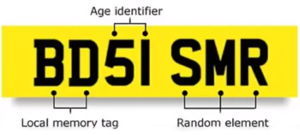
Perhaps you are wondering why cars have such number plates? Their official name is vehicle registration plates, but everyday they are simply called number plates (not licence plates!).
Their first two letters indicate the region where the number plate was issued. The letters I , Q and Z are not used (misleadingly similar to numbers), the letter O is only allowed for Oxford. The last three letters are just chosen at random. But the middle two-digit number represents the time of issue. It changes twice a year, in March and September. From March to September, it is the last two digits of the year, from September to March of the following year, 50 is added.
There are also earlier number plates in use, and cars from Northern Ireland, for example, are marked differently. If you have a lot of money, you can also buy a very special number plate.
Q: Why do you stand on the right on the escalators when all traffic is on the left?
A: The first escalators were designed so that at the end the steps turned straight down and to direct people out, there was a diagonal barrier before it that pointed to the right. That is how it has remained as a tradition.
Q: What strange object is this? They can often be seen in London.
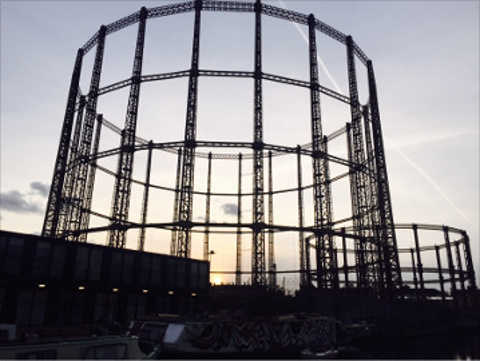
.
A: This thing is called a gasometer. This is a gas tank. In very simple terms, it is an "upside-down saucepan" placed in a hole filled with water, which, when filled with gas, rises up inside this structure. Currently, only the trusses are visible, as these warehouses are no longer in use. Better ways to store gas have been invented. But there are still a lot of these.
Q: Why is the traffic in front of the Strand Hotel on the right?
A: At the end of the cul-de-sac leading to the hotel, there was an entrance to the theatre on the right. The lady going to the theatre sat behind the coachman on the right. So the lady didn't have to go far to enter the theatre.
Q: Is it always foggy in London?
A: It is not. It's a thing of the past. The famous London fogs were caused by coal-fired fireplaces, whose smoke provoked the fogs. Now they are banned and fog can be seen in London perhaps less often than in other countries. (A matter of taste, of course, I like fog.)
Q: Does it rain all the time in London?
A: No. It's just a legend. According to meteorologists, it rains more in Miami, Washington DC and New York. Maybe it rains more often in London. But it's rather pleasant. It started to rain, go to the shade, it will be over in a quarter of an hour.
Q: Is London a costly (expensive) city?
A: So and so. The most costly is the place of residence. The rent of a decent flat is usually very high. Transport is not cheap either. But in the grocery store, the prices for many goods are cheaper than in other countries.
Despite newspaper reports of terrorist attacks, London is still a fairly safe city. There are places in the far suburbs that are not recommended, but in general you can walk quite safely in the city and its wonderful parks. Of course pickpocketing happens, carry money in a safe place and spread out. Police patrols in London generally do not carry weapons. Sometimes, however, you can also see armed special patrols, and their weaponry would be from the film Men in Black.  )
)
However, something has changed over the years. For example, compare these two pictures of Westminster Bridge, the first one does not have the barrier that separates the pavement, which protects the pedestrians in the second one.
About safety yo can also watch this video .
.